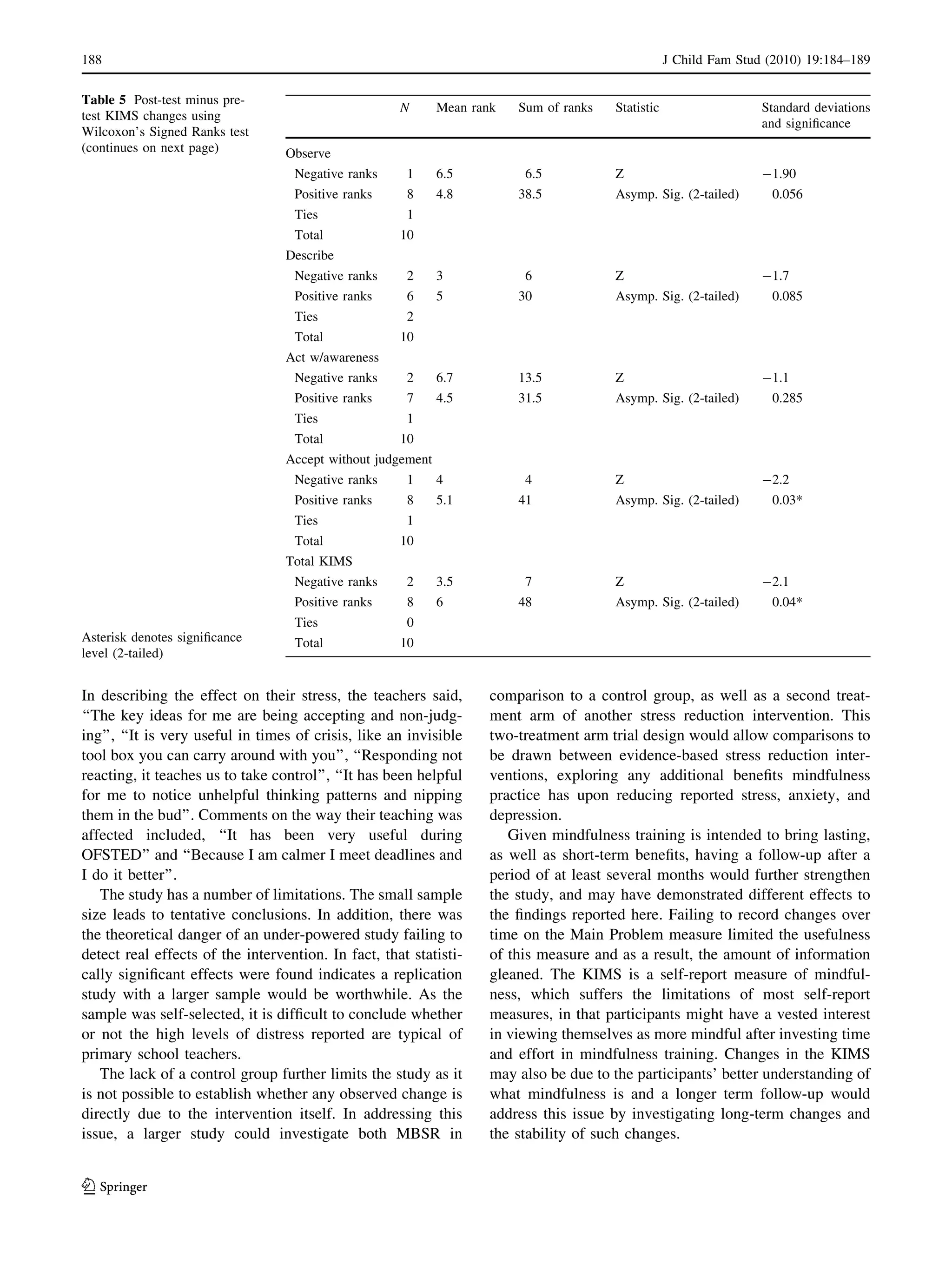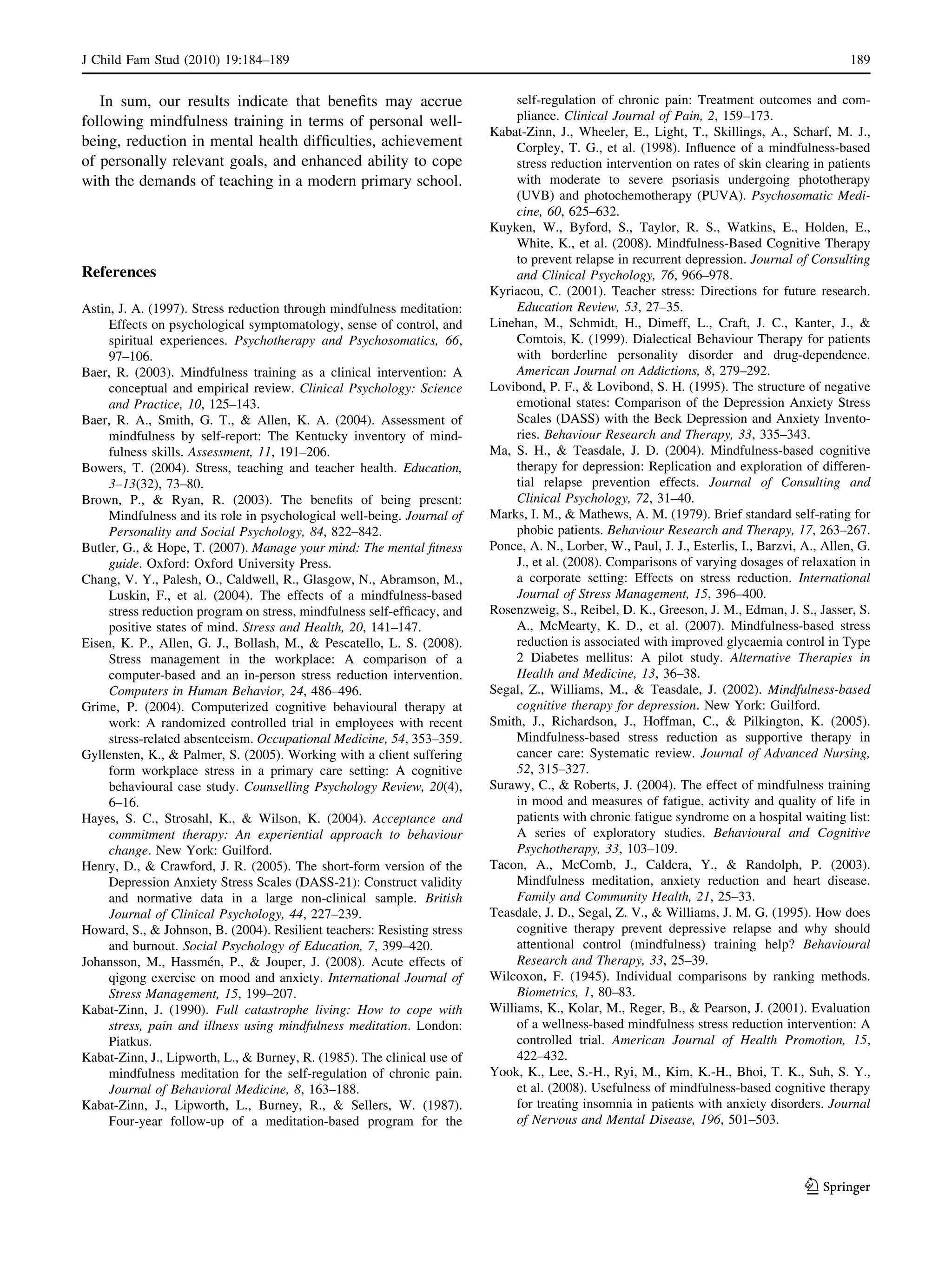This document summarizes a study that evaluated the effects of teaching a Mindfulness-Based Stress Reduction (MBSR) course to primary school teachers.
The study found that most teachers reported significant levels of depression, anxiety, and stress prior to the course. After completing the 8-week MBSR course, most teachers' depression, anxiety and stress scores improved, with only a few reporting clinically significant distress. The course also helped teachers improve on dimensions of mindfulness like observing, describing, acting with awareness and accepting without judgment. Overall, the results suggest that MBSR may be an effective and cost-efficient approach to reduce teacher stress and burnout.
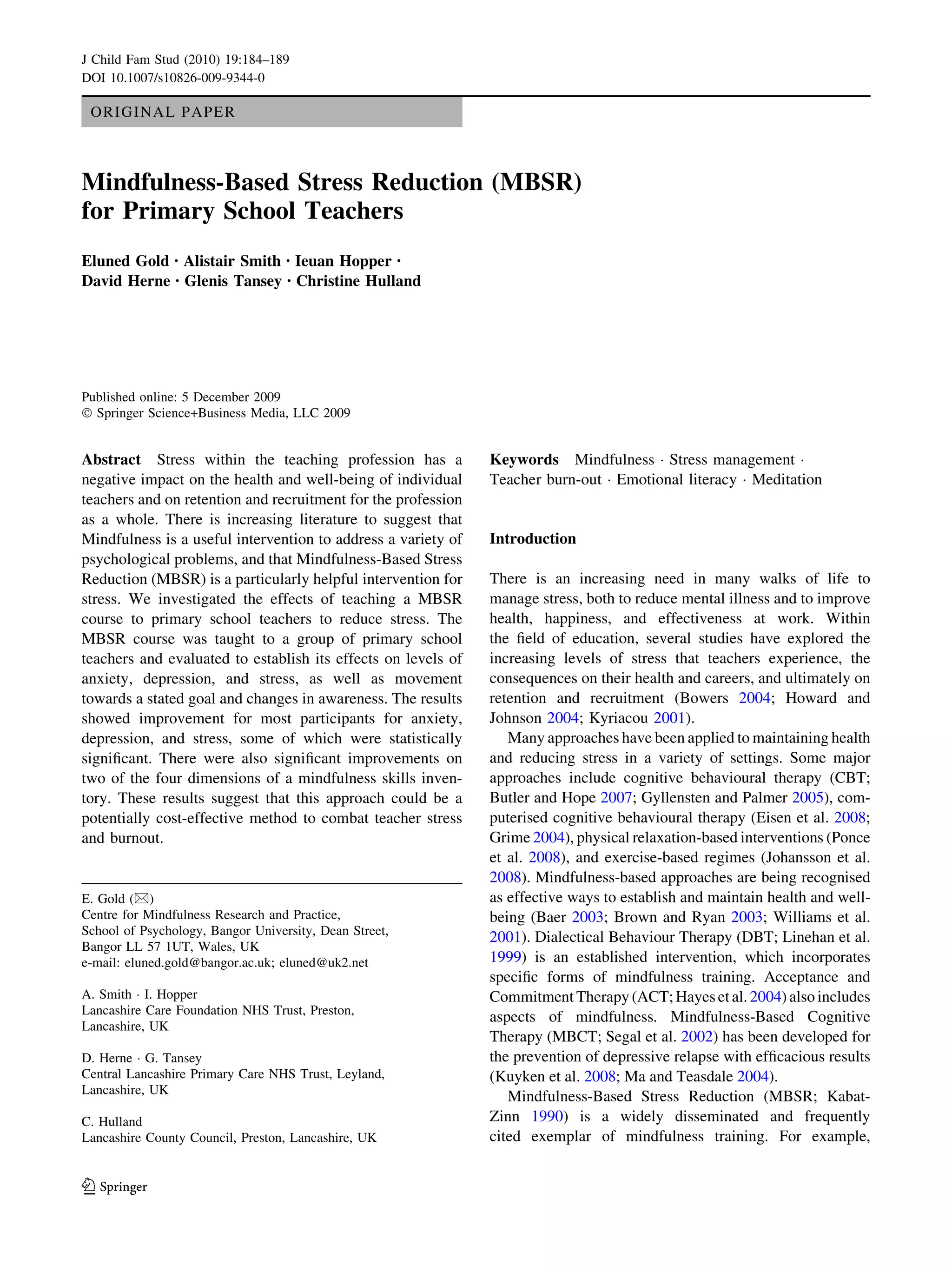
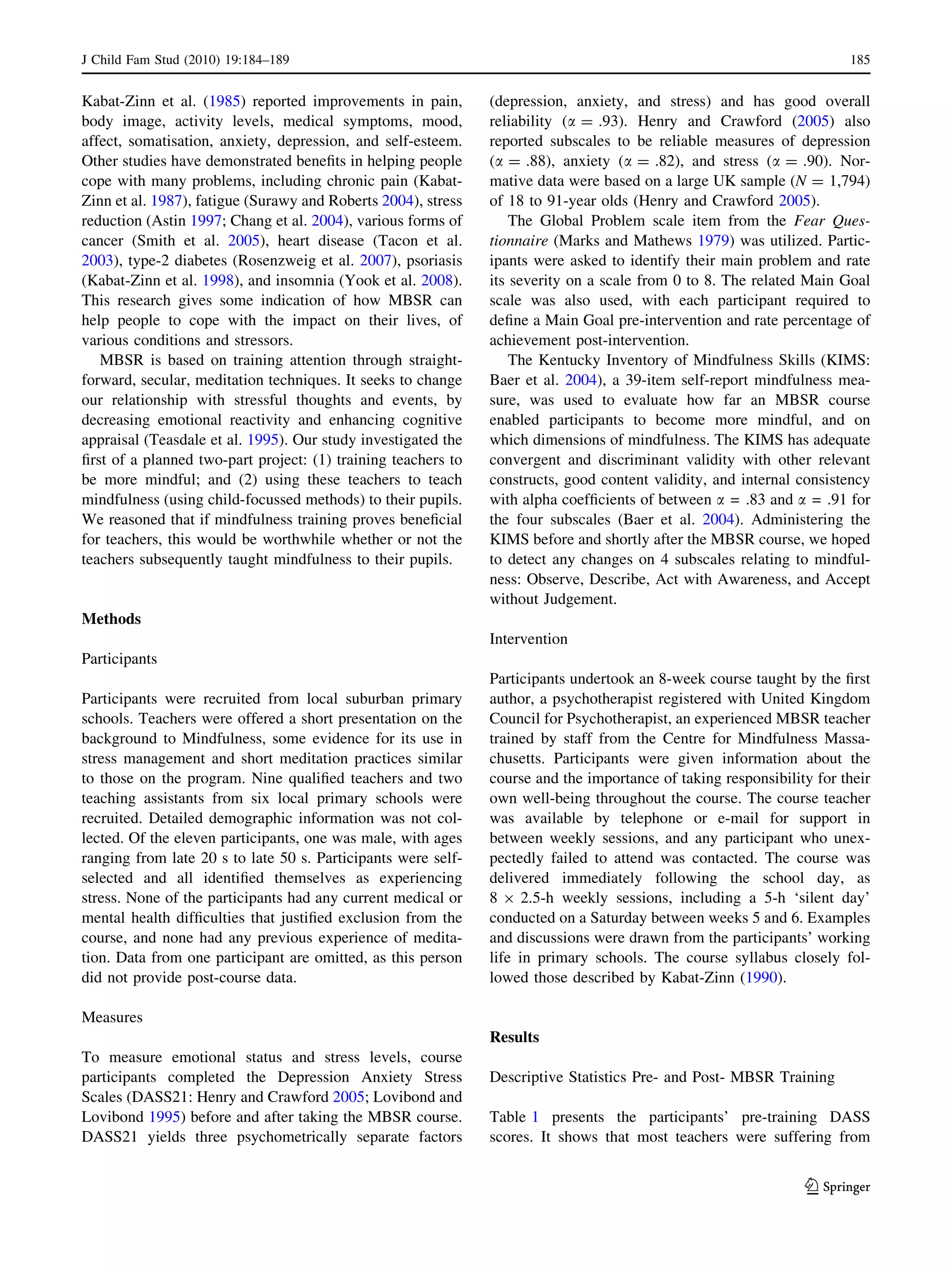
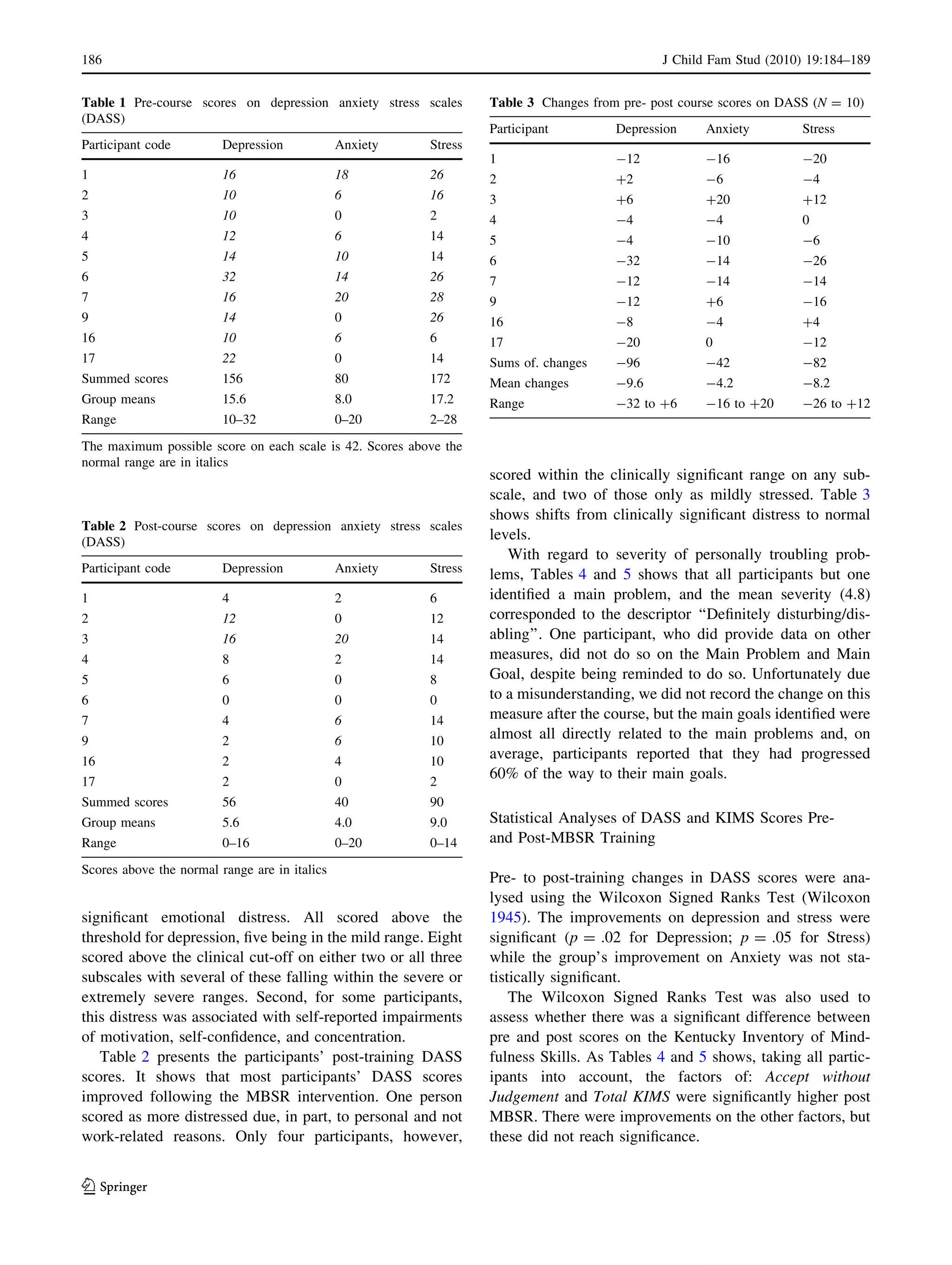
![Discussion
This small initial study focused on stress, depression, and
anxiety within a self-selected sample of primary school
teachers. The results showed that most teachers were suf-
fering from emotional distress. All scored above the clin-
ical threshold for depression, with eight scoring in the
clinically significant range on two or all three subscales.
The distress of some participants was associated with self-
reported impairments of motivation, self-confidence, and
concentration. Due to the small sample size, it is not pos-
sible to draw generalisable conclusions as to whether the
sample itself was atypical, or whether teachers in English
primary schools are a distressed occupational group.
Most participants experienced reductions in stress,
depression, and anxiety as a result of participating in the
MBSR course, as shown by changes in the DASS scores.
Post-intervention, only four scored within the clinically
significant range on any subscale, with two of those only as
mildly stressed. One participant reported more anxiety and
stress at follow-up, despite achieving their personal goal
and feeling that the course had been helpful. This may be
explained by life events occurring during the course and
could have been independent of it. All other participants
improved. These findings broadly reflect others’ findings
about the effectiveness of MBSR as a stress management
strategy (Baer 2003; Brown and Ryan 2003; Williams et al.
2001).
Despite the KIMS scale scores showing marked
increases in mindfulness on all 4 factors, only the increase
in Acceptance without judgement yielded a statistically
significant effect. However, Observe did demonstrate a
positive trend and lends some strength to KIMS change
scores as a result of MBSR training.
Before the MBSR course, participants set main goals for
their desired achievements through taking the course. On
average, participants reported that they had progressed
60% of the way to these goals in less than three months.
Although small, these findings are sufficiently positive to
encourage further study. If our findings prove to hold more
widely, MBSR may be an efficacious and potentially cost-
effective intervention for occupationally stressed teachers.
Our evaluation was not designed with a specifically
qualitative methodology. However, participants made some
important and revealing statements about the impact the
course had on them. For example, participants commented,
‘‘I wish I’d known about it 30 years ago’’, ‘‘I now find time
to sit quietly’’ and another noted ‘‘enjoying the moment’’.
Table 4 Main problem and goal measure
Participant Main problem (specified pre-course) Disturbing/
disabling
(0–8)
Main goal (set pre-course) Goal
achievement
post-course
(0–100%)
(%)
1 Too many things in my head and not enough time to
deal with them
6 To be able to prioritise more effectively and
actually deal with issues without letting other
issues intervene
80
2 Trying to do too many things at once 3 To learn to say ‘no’ to people and manage time
better
50
3 [Omitted for reasons of confidentiality] 3 [Omitted for reasons of confidentiality] 100
4 [Omitted for reasons of confidentiality] 8 Relaxing and coming to terms with this 30
5 Inability to think through a problem—e.g. planning
logically and to feel I’ve ‘covered all the bases’
6 To be able to think through a task and feel I’ve
covered all eventualities
80
6 Lack of reward from working in school. Feeling of
pressure to work in ways that are against children’s
best interests. No control over direction and
purpose of work
7 Improvement in self-esteem and feelings that
what I am doing is appropriate and worthwhile
90
7 Lack of belief in my abilities, fear of the unknown 3 Quiet confidence in myself, stop putting off
doing things
50
9 No relaxing time, always on the go, too much to do,
never stop trying to succeed at everything etc.
4 Not to be so bothered about fitting it all in 60
16 [Omitted for reasons of confidentiality] 3 [Omitted for reasons of confidentiality] 0
17 No data
Mean 4.8 60
Range 3–8 0–100
J Child Fam Stud (2010) 19:184–189 187
123](https://image.slidesharecdn.com/mindfulness-basedstressreduction-140404151423-phpapp02/75/Mindfulness-based-stress-reduction-4-2048.jpg)
